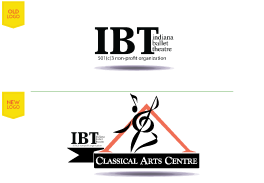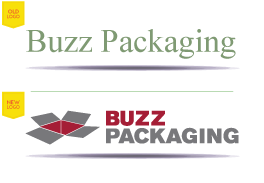Rebrand For a New You!
Southwest, Gordon Food Service Store and Pizza Hut all rebranded in 2014, each for their own reasons. Let’s take a look at what makes a good reason for change.

Southwest®’s new brand has a clever three-colored heart and bolder colors. Rebranding came about because of their new international flights, their purchase of AirTran and the fact that Dallas’ travel restrictions are being lifted, giving them more opportunities. Forbes criticized the move saying it’s too soon, and Southwest should have waiting until their performance matches their new excitement. “Southwest became a great brand by adopting a fun, low-cost, friendly brand position. These days it doesn’t seem to be any of these.” Forbes 9/17/2014

Gordon® Food Service introduced a new logo, tagline and name, saying in a press release this is “part of the evolution of our corporate brand.” They took away the GFS acronym, and are leading with the name Gordon as a way to emphasize they are a family business. We like their new tagline: Always at Your Table. They sent a postcard to customers and created a landing page to fully explain the story.

The new Pizza Hut® features ten new crust flavors, six new sauces, five new toppings, and four new flavor-pack drizzles. You can choose from “over 2 billion combinations of pizza.” All of those changes demanded a new look!
January is a time for reassessments, and the New Year turns our attention to what we can do better. Has your company gone through changes that would make it a good candidate for rebranding?
A brand is so much more than a logo.
Your logo expresses the essence of your brand, and it should be meaningful and powerful. Most of the time companies rebrand to build lost market share. You should rebrand when:
- You are not telling your full brand story. You’ve grown and evolved since the original identity was created, and you need to communicate the new direction.
- Your audience has changed, and their needs have changed. Some brands need to change in order to stay relevant to new generations.
- Competition forces you to set yourself apart in a more meaningful way. Companies use rebranding as a way to make people take a fresh look at themselves.
- Your current identity has been damaged. Your reputation may have been hurt by bankruptcy or some other kind of crisis. Some use rebranding to hide malpractices of the past.
RadioShack®’s and Hershey’s Rebrand Were Total Failures.

Radio Shack switched its name to The Shack, but didn’t change the product or philosophy along with it. The lesson is to make sure you have a good reason to rebrand.

Hershey wanted to create a “fresh and modern interpretation of the beloved Kisses icon.” The company replaced a photograph of a silver Hershey’s Kiss with an animated, solid brown version. Sadly, the new Kisses looks just a bit too similar to a certain online emoticon, often used on social media to depict feces.
Why does rebranding fail?
- There is a lack of true change. Just changing the name will disappointcustomers who will be looking for a good reason to give you a try.
- If you rebrand based on an aspiration, you may be biting off more than you can manage. Keep the change reasonable and attainable.
- Your brand statement is not plainly stated. Vague brand positioning or one that is hard for customers to understand will cause problems. State your claim clearly and deliver on that promise.
- The entire staff must all be on the same page and know what is expected at every touch point. A brand is something you do. The CEO must lead and be an example. If the charge doesn’t start at the top, the effort will fail.
Final tips
It’s vital to estimate the cost of rebranding before you get started. Larger companies will have a large list including a multitude of signage. Smaller companies are more flexible and will use rebranding as a growth maneuver. Both will need to change mission statements and create a marketing plan for the roll out. A name change will require papers submitted to the secretary of state. This great infographic from Entrepreneur Magazine has more examples.
VIA Case Studies

Simple and clean, inspiring and inviting, the new logo represents the IBT’s merge to the Classical Arts Centre.

By using strong graphics and a bold typeface the updated Smith Animal logo will stay relevant for generations.

Capstone’s updated logo and name combines the original typeface with a vivid color scheme and more. Adding “Design and Renovation” expresses more clearly who they are.

Buzz Packaging needed an identity. They relied on an inconsistent typeface. The new look is bold, defining, and impactful.
Contact VIA if you’d like a free consultation about rebranding your company.




